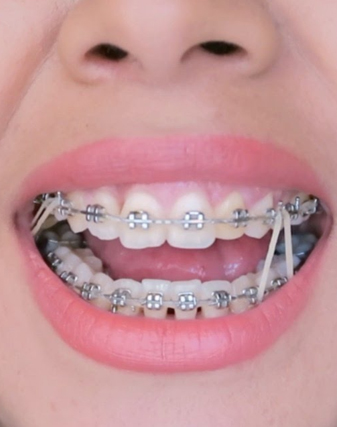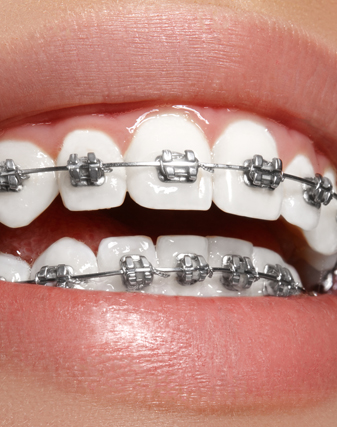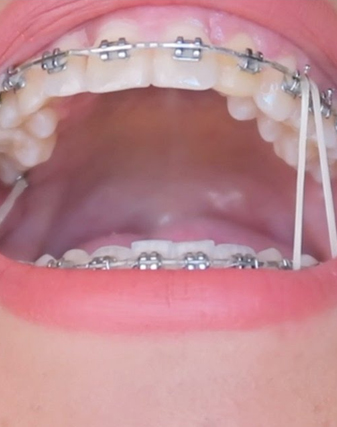BRACES
Features of a Winning Smile
What Is Braces ?
Today's orthodontics offer more kinds of braces than ever before. Check out your options:
Metal braces/Traditional braces : These are the metal brackets and wires that most people picture when they hear the word "braces." However, modern brackets are smaller and less noticeable than the notorious "metal-mouth" braces that many adults remember. Plus, new heat-activated archwires use your body heat to help teeth move more quickly and less painfully than in the past.
Ceramic Braces : Ceramic braces are the same size and shape as metal braces, except that they have tooth-colored or clear brackets that blend in to teeth. Some even use tooth-colored wires to be even less noticeable.
Lingual Braces : Lingual braces are the same as traditional metal braces, except that the brackets and wires are placed on the inside of teeth.
Book Appointment
What are the benefits of Braces
As important as appearance can be, the benefit of braces goes beyond just esthetics. Straight teeth help an individual more effectively bite, chew, and even speak. It may come as a surprise that straight teeth contribute to healthy teeth and gums. Straighter teeth are easier to brush, clean, and floss!
What age is the best of Braces ?
Patients with orthodontic problems can benefit from treatment at nearly any age. An ideal time for placement of braces is between 10 and 14 years of age, while the head and mouth are still growing and teeth are more conducive to straightening.
Do Braces really work on adults?
This slowly moves your teeth or jaw or both into place. It depends on your treatment, but the average adult has braces for 18 months to 3 years. ... They're really meant to shift teeth around, Wadhwa says. If you need to close a big gap between teeth, metal braces are the better choice.







